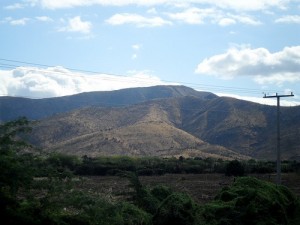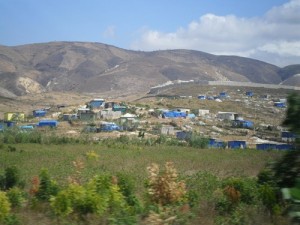2013 has been declared “the year of the environment” in Haiti — though I, like many others, was not aware of this until very recently. On May 1, the Haitian government launched yon ayisien, yon pye bwa, a national reforestation initiative to double Haiti’s forest cover by 2016 with the planting of 50 million trees a year. It was also stated that this effort would be accompanied by an extensive public outreach component that not only addresses Haiti’s abysmal environmental state but also alleviates poverty. Whereas this latter portion has received less attention, it is actually the most important.
Believe it or not, Haiti’s deforestation problem is not about the trees. Deforestation was largely precipitated by people’s need to make a living. In the absence of other viable alternatives, cutting down trees became an feasible option that allowed struggling populations to use trees to make charcoal in order to sell it and support their families.
To effectively combat this, any attempt at reforestation has to take a two-pronged approach that explicitly addresses the countries socioeconomic challenges in addition to the environmental degradation resulting from the exposed mountaintops that have left countless Haitians, particularly the poor, vulnerable to the elements every year during hurricane season or times of heavy rain. This will require more than simply planting trees.
I am encouraged, however, by the public outreach component inherent in this initiative. In tandem with radio programs, pamphlets and advertising green alternatives to charcoal and wood (such as solar, kerosene and propane stoves), an environmental surveillance corps will be created to monitor protected areas. Furthermore, starting this September, environmental protection will be incorporated into the school curriculum to raise awareness among a younger population. Clearly the expressed goal of turning every Haitian into a forest guard is being taken seriously.
Nevertheless, this national reforestation strategy could be even more progressive by finding linkages between Haiti’s multifaceted challenges in order to simultaneously address the poverty issue. Of Haiti’s difficulties, the need to provide adequate housing, decentralize major cities, address severe food shortages and stabilize the environment, continue to be major preoccupations. What if Haitian people, starting with the 320,000 or so displaced by the earthquake, were provided the option to relocate to designated environmental zones where each household is held responsible for reforesting their allotted area, planting a variety of cash crops and possibly turning a percentage of the harvest over to the government’s agricultural ministry towards national production targets? The rise of a food cooperative or other farming collectives could emerge to enable this community to become more sustainable.
For instance, China’s 1978 economic reforms are credited with having placed the country on the prosperous path that it is on today. They were initiated by large scale changes in Chinese agricultural sector that incentivized farmers to meet national benchmarks in order to combat that country’s ongoing food crises. This measure improved local economies through the creation of Town and Village Enterprises while coinciding with China’s industrial rise to position it as one of today’s superpowers. This point is not so much to advocate that Haiti should emulate China, but rather to highlight the fact that reforestation, relocation, the agricultural sector and ever present food shortages (among other possible combinations) can all work towards the same goal of improving Haitian livelihoods — as well as the country’s overall physical, social and economic well-being.
Along with developing crucial economic development strategies, the Haitian government needs to consider hiring those with experience in agro-forestry to train the general population in techniques, such as soil renewal, to increase the likelihood of success for this reforestation push. Many reforestation efforts fail, not because there were not enough trees or that they were cut down again after replanting (as has happened) but because appropriate trees for nutrient-poor soil conditions were not used in revitalizing the environment nor was there enough consideration for who would maintain the trees after they were planted.
Yes, more trees would stem the flooding, mudslides and soil erosion that has been exacerbated by deforestation. Just last year, Hurricane Isaac destroyed 40 percent of Haiti’s agricultural sector in August, and 80 percent of the remaining harvest was destroyed by Hurricane Sandy that October. Trees are extremely important, as well as greater public awareness, in getting Haiti’s environmental situation under control. While I am not familiar with Haiti’s previous national reforestation initiatives or why they have failed, this current approach has great potential to succeed if the economic development component, that is inextricably linked to deforestation, is better integrated throughout this effort.




About The Author: Vanessa L.
More posts by Vanessa L.